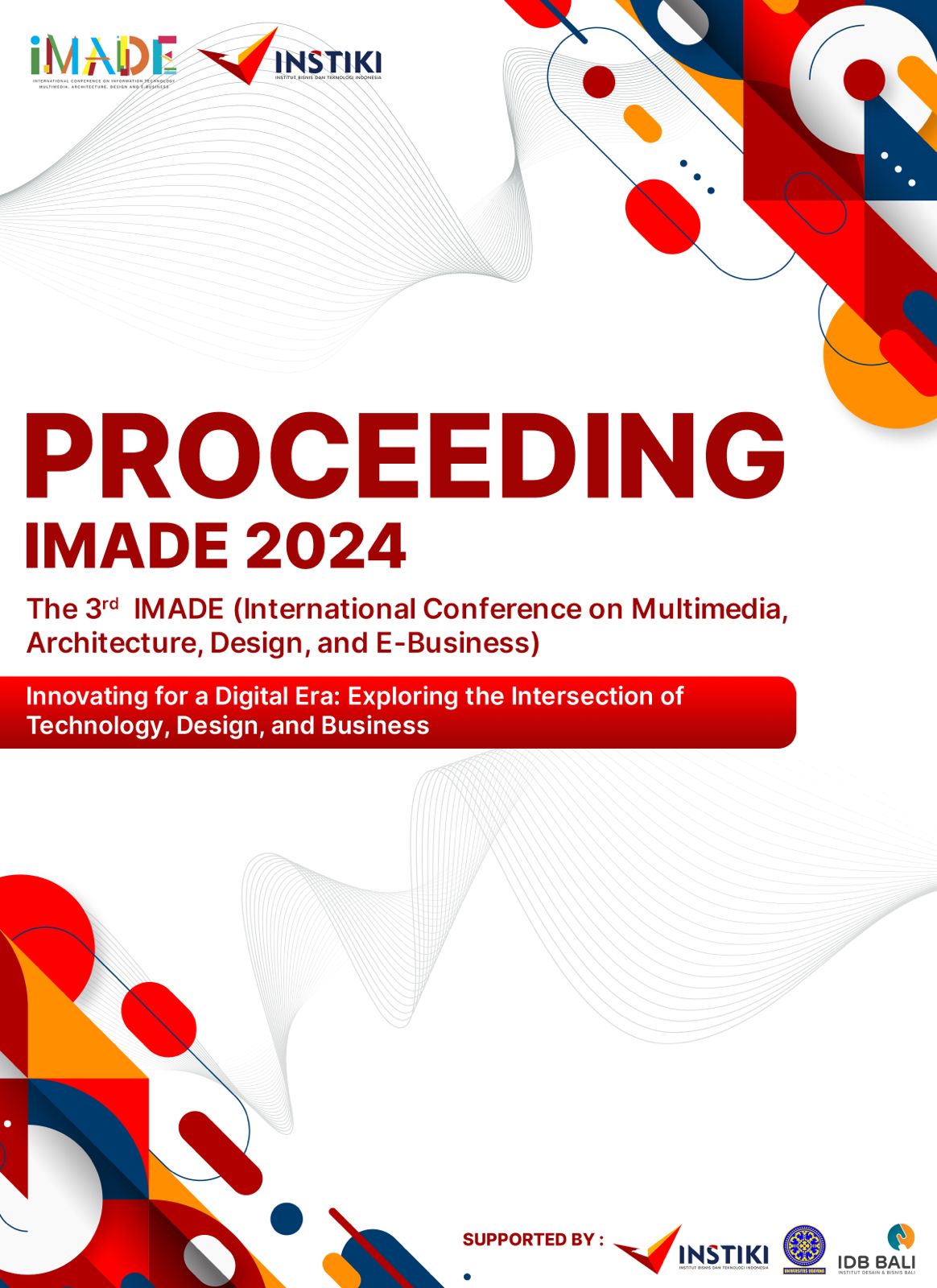THROUGH THE WINDOW: CULTURE, COMMERCE, AND VISUAL ART IN UBUD’S DISPLAY SPACE
Keywords:
Ubud, Window Display, Commercialization, Modernization, Visual ArtAbstract
The commercialization of Ubud has a significant impact on the development of the local economy. However, it has also posed challenges in maintaining a balance between growth and preserving culture and the environment. The influence of increasingly developed modernization has driven Ubud’s economy to create innovations in line with current trends. One indication of this is the emergence of various types of businesses with window display designs to attract potential consumers. This descriptive qualitative research collected data by observing stores in Monkey Forest Road and Goutama Street and used a thematic analysis approach to explore the design elements of window displays and identify their classifications, as well as their implications on Ubud’s cultural identity. Ultimately, there are two categories of window displays that show different approaches and objectives: the environmentally adaptive reuse and the brand identity. The emergence of Ubud's window display designs reflects the implementation of modernization and tradition to meet the demands of the global market. In this point, despite Ubud continues maintaining its rich cultural identity, the presence of window displays creates challenges in terms of preserving cultural values that must be faced wisely.
References
Bestari, N.M.P., Widhiasthini, N.W., 2023, ‘Kontribusi Perempuan Bali dalam Pengembangan Pariwisata Kreatif di Ubud’. Jurnal Kajian Bali, 13(2), pp. 388-409. DOI: https://doi.org/10.24843/JKB.2023.v13.i02.p02.
Danielle L., Patrick L., Bruno D., 2022, ‘The Influence of Window Displays on Patronage Intentions: The Case of French Tourist Bureaux’. Journal of Marketing Trends, 8 (1), pp.46-63.
Ernawati, N.M., Sudarmini, N.M., Sukmawati, N.M.R., 2017, ‘Impacts of Tourism in Ubud Bali Indonesia: A Community- Based Tourism Perspective’. The 2nd International Joint Conference on Science and Technology (IJCST) 2017, pp. 1-9. DOI:10.1088/1742-6596/953/1/012078.
Indrianto, A. T., 2016, ‘The Commodification of Culture in Bali in the Frame of Cultural Tourism’. ASEAN Journal on Hospitality and Tourism, 4(2), pp. 151-165. DOI: https://journals.itb.ac.id/index.php/ajht/article/view/3031.
Jain, V., Sharma, A., and Narwal, P., 2012, ‘Impact of Visual Merchandising on Consumer Behavior Towards Women’s Apparel’. International Journal of Research in Management, 2(5), pp. 106-117.
Lahitani, S., 2017, ‘10 Kota Terbaik di Asia, Ubud Salah Satunya’, Liputan 6, https://www.liputan6.com/citizen6/read/3118601/10-kota-terbaik-di-asia-ubud-salah-satunya (accessed date 19 November 2024).
Lashin, M.M. A., Khan, M. I., Khedher, N.B., Eldin, S.M., 2022, ‘Optimization of Display Window Design for Females Clothes for Fashion Stores Through Artificial Intelligence and Fuzzy System’, Applied Sciences, 12(22), pp. 1-11. https://doi.org/10.3390/app122211594.
Lilly, J., 2010, ‘The Effects of Store Window Display on Customers Perception and Attitude in Retail Clothing Outlets’. Journal of Global Economy, 6(1), pp. 16–20. DOI: 10.1956/jge.v6i1.102.
Mahendra, M., 2024. ‘The Impact of Tourism on The Preservatioan and Transformation Cultural Identity in Bali, Indonesia’. Studies in Social Science & Humanities, 3(6), pp. 34-41. DOI: 10.56397/SSSH.2024.06.05
Morgan, T., 2016, ‘Visual Merchandising: Window and In-Store Displays for Retail’, Second Edition (Ed. 2), London: Laurence King.
Pratama, P.P.Y.A., Cahyono, A., Jazuli, J., 2021, ‘Barong ket Dance in Ubud Bali: The Enculturation Process for the Implicated Young Generation to the Existence of Traditional Dance’. Catharsis: Journal of Arts Education, 10(1), pp. 10-17.DOI: https://doi.org/10.15294/catharsis.v10i1.46923.
Priyanka, D.C., Jayantilal, K.S., 2022, ‘Impact of Window Display on Consumer’s Shopping Pattern in Mumbai’s Apparel Stores’. International Journal of Education, Modern Management, Applied Science & Social Science (IJEMMASSS), 4(1), pp. 17-24.
Putri, A., & Maulina, R., 2022, ‘Angkul-Angkul in Ubud Village and It’s Change’. ARTic, 4(2), 401-411. DOI: https://doi.org/10.34010/artic.v4i2.8589
Purnamasari, N.P.L., Adnyana I.W., Mudra, I.W., Mudana, I.W., 2022, ‘The Image of Flora and Fauna Painting in Batik Craft: Phenomena in Ubud, Bali’. The International Journal of Social Sciences World, 4(2), PP. 317-324. DOI: https://doi.org/10.5281/zenodo.7426054.
Rindrasih, E., 2022, ‘Re-focusing Paradise: Analyzing the Tourism for Development Tools Considering Pandemic Covid-19 Case Study: Ubud Bali, Indonesia’. The International Academic Conference on Tourism (INTACT) "Post Pandemic Tourism: Trends and Future Directions" (INTACT 2022), PP. 120-133. DOI: 10.2991/978-2-494069-73-2_10.
Ruziye, COP., 2015, ‘Evaluation of Window Displays by Consumers with Hedonic and Utilitarian Purchasing Behaviors: A Research on Y Generation’. International Journal of Economics, Commerce and Management, 3(9), pp. 97-111.
Suacana, I.W.G., Wiratmaja, I.N., Sudana, I.W., 2023, ‘Ecotourism-Based Model Development Strategy Local Wisdom of Indigenous People in Ubud Bali Indonesia’. Migration Letter, 20(6), pp. 325-335. DOI: 10.59670/ml.v20i6.3484.
Subrata, N.P.E., & Kasmana, K., 2022, ‘Design Analysis of Kori in Palebahan Ancak Saji at Puri Agung Ubud, Bali’. ARTic, 4(2), 391-400. DOI: https://doi.org/10.34010/artic.v4i2.8548
Utami, I.G.A.C., Hendrawan, F., Dinata, R.D.M., 2023, ‘Sense of Place and Indigenous Wisdom: Exploring Cultural and Environmental Sustainable Practices in Ubud Palace, Bali’. The 3rd International Conference of Art, Craft, Culture and Design (ICON-ARCCADE 2023), pp. 7-19. DOI: 10.2991/978-2-38476-238-5_2.
Downloads
Published
How to Cite
Issue
Section
License
Copyright (c) 2024 Ni Putu Eka Trisnasari Subrata, Freddy Hendrawan, Ramanda Dimas Surya Dinata, Ni Putu Riska Putri Kumala

This work is licensed under a Creative Commons Attribution-NonCommercial-ShareAlike 4.0 International License.





